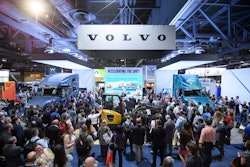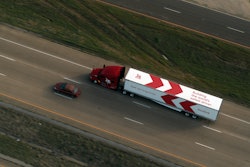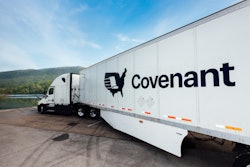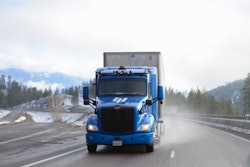Trucking news and briefs for Thursday, May 19, 2022:
Detroit launches new active brake-assist system
Detroit announced Wednesday it has added Active Side Guard Assist (ASGA) to the Detroit Assurance suite of safety systems to improve safety in low-speed, passenger-side turns.
Planned for production beginning Sept. 1, ASGA detects moving objects in the path of a right-hand turn at speeds below 12 mph and applies the brakes, which improves safety at intersections and in truck yards and freight terminals.
Detroit Assurance with Active Brake Assist 5 (ABA 5) uses always-on, fused radar and camera technology to monitor the road and mitigate potential collisions. ASGA is the first feature of its kind available in the industry.
“Detroit Assurance with ABA 5 is the most comprehensive suite of safety systems available in the industry and we are constantly looking for ways to make it even better,” said Mary Aufdemberg, general manager, product strategy and market development. “By alerting drivers to blind spot hazards and braking to mitigate collisions, Active Side Guard Assist adds another layer of protection for drivers and the public.”
The Side Guard Assist option was originally launched in 2020 to detect and warn the driver of moving objects along the length of the passenger side of the truck but does not provide braking. With ASGA, when the side-mounted radar detects a moving object, such as a pedestrian or bicyclist, along the length of the passenger side of the tractor, the driver receives a yellow warning triangle in the right-side A-pillar. If the driver sets a right-hand turn signal or begins a right-hand turn, the yellow warning triangle turns red, an audible alarm sounds, and braking engages.
ASGA is an option on Freightliner Cascadia and Western Star trucks equipped with Detroit Assurance with ABA 5, including the newly released Freightliner eCascadia.
FedEx, Aurora expand autonomous trucking pilot
Autonomous trucking tech firm Aurora Innovation and FedEx (CCJ Top 250, No. 1) announced the expansion of their pilot program to autonomously move FedEx shipments on an additional commercial lane in Texas.
In March 2022, Aurora's next-generation autonomous trucks -- based on the new Peterbilt 579 -- began to transport FedEx shipments between Aurora’s new terminals in Fort Worth and El Paso. Aurora is making the 600-mile trip on a weekly basis with safety drivers on board and expects to increase the frequency of trips in the coming months. Aurora continues to move shipments for FedEx between Aurora’s South Dallas terminal and its new Houston terminal on a daily basis.
Since the commercial pilot began in September 2021, Aurora’s deliveries of FedEx shipments between Dallas and Houston have been 100% on time.
With each trip, the Aurora Driver (Aurora’s self-driving technology product) is providing thousands of FedEx customers with packages that were autonomously transported.
Aurora moves trailers for FedEx during various weather conditions and all hours of the day and night, optimizing fleet utilization. To date, the companies have completed 60,000 miles with zero safety incidents.
Southeastern Freight restructures LTL regions
Southeastern Freight Lines has implemented a new regional structure this month that expands its organizational framework from six to eight regions.
The regional restructuring is part of a business strategy that enables regional leadership to invest more time in the service centers with Southeastern’s associates, the company says.
By reducing the size of each region, regional leadership is better equipped to address the increase of freight volumes and combat industry strains such as the driver shortage. With eight regions, Southeastern furthers its pursuit of operational excellence and commitment to associate development at the field level.
“As a company, we are continuously working to advance our culture, provide quality service to our customers and solidify our vision of being the best and biggest in the Sunbelt,” said Coley Campbell, senior vice president of operations for Southeastern Freight Lines. “We believe this new structure will allow us to continue growing our footprint in the Sunbelt while ensuring we keep our associates and culture at the forefront. We anticipate these changes will have a positive impact on our associates, which inevitably will have a very positive impact on our customers and organization as a whole.”
As part of the organizational restructuring, Brian Schulz has been promoted to Vice President of Service Center Operations – Regions 4, 5 and 7, while Austin Winters, Jason Hood and Mark Coggin have each been promoted to the role of Regional Vice President for their respective territories. The new structure has also opened a number of other leadership growth opportunities at the service center management level where more than a dozen additional Southeastern team members are taking on new positions.












